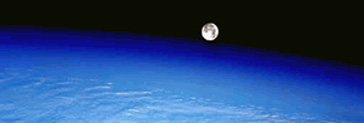 This morning I’m attending an educators workshop at the Lunar and Planetary Institute on “Returning to the Moon.” At 8:45am on a Sunday I find my self in a room packed with formal educators, EPO professionals (that’s my category today), and coffee (sometimes the coffee gets high billing to). This forum has a neat multi-pronged approach: they will be teaching us about planned programs for the moon, discussing with us during break out groups our ideas and concerns, and then engaging us in ways we can get involved in training the public of all ages about NASA’s plans to return to the moon.
This morning I’m attending an educators workshop at the Lunar and Planetary Institute on “Returning to the Moon.” At 8:45am on a Sunday I find my self in a room packed with formal educators, EPO professionals (that’s my category today), and coffee (sometimes the coffee gets high billing to). This forum has a neat multi-pronged approach: they will be teaching us about planned programs for the moon, discussing with us during break out groups our ideas and concerns, and then engaging us in ways we can get involved in training the public of all ages about NASA’s plans to return to the moon.
The opening address is coming from Paul D Spaudis. In January 2004, Bush and the 109th congress endorsed a 5-step vision for NASA:
1: Return to space
2: Complete ISS and return Shuttle
3: Build new human spacecraft for tranport beyond Low Earth Orbit
4: Return to Moon with people and robots to explore and prepare for voyages beyond
5: Human missions to Mars and other destinations
This is a vision not a specific mission plan. It defines where NASA should go by defining sustainable (statement of speaker) growth.
This is a vision of exploration. Not science vision. Paul is very carefully explaining this, saying Exploration is going into the unknown, probing the frontier. He says exploration is broader and richer than science, “promoting security and asset protection, wealth creation, settlement and infrastructure development. Exploration enables science by providing access to remote locates.” Humans, he argues, provide exploration aspects of inspiration, drama and spectacle – this is the emotional dimension of exploration.
So why the moon: basically, it’s the closest thing we can easily get to and provides a launching point near earth objects, Lagrangian points, and more. There are also science reasons to go to the moon. Specifically the history of the sun is embedded in the surface of the moon in the form of solar dust grains. There are also cratering histories (wiped out on Earth by weather) that we can use it to study the history of periodic (if a periodicity exists) bombardments. The moon also allows man to practice techniques for exploring space and learning how to live off the Earth while still being on 3 days away from the Earth. Finally, the moon has materials needed to construct space craft. Rather than hauling stuff from Earth to space, we can haul equipment from Earth to the Moon, and use the equipment to mine oxygen for air and reactants that we allow us to refuel ourselves and our spacecraft.
I really have to admit that he totally has not sold me on the need for humans. These are largely emotion arguments, and no where has he shown the requirement for wet wear (us) to be there to operate hardware (rovers, etc). They have an entire day . . . let’s see where their argument goes.
During the Q&A session the audience really is on the attack. The speaker is doing an excellent job playing the party line. Party line: NASA will blaze a trail to prove if human space exploration (mining, and for profit enterprises) are possible, enabling commercial space agencies to go forward and build on NASA’s (tax payer paid for) prototyping. NASA will not be licensing the technology it defines.
Some asked, “having polluted the Earth, is their concern what we will do else where?” Paul just said “human’s haven’t significantly harmed the Earth’s biosphere” as a part of the argument for going out and mining and building industrial complexes else where in the solar system.
I don’t think I agree, but now it’s time for small group break out sections.



Trackbacks/Pingbacks